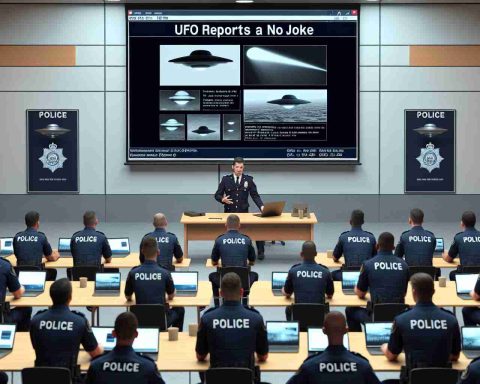The landscape of military engagement in Syria is shifting dramatically, with reports surfacing about the Syrian rebel group Hay’at Tahrir al-Sham (HTS) taking on a crucial role in securing the Russian embassy in Damascus. This involvement has created a buffer for Russian interests, deterring other militant factions while negotiations between HTS and Russian officials intensify regarding Russia’s military viability in the region.
As Russian forces consolidate their presence in Latakia, military convoys have been observed transporting essential equipment, indicating a possible strategic withdrawal. Observers note that as the Ukraine conflict escalates, Russia may be reevaluating its commitments in Syria, suggesting a potential pivot in focus.
Recent satellite imagery has unveiled increased activity at Khmeimim Air Base, highlighted by several heavy cargo planes arriving to seemingly facilitate a military transfer. This base is vital for Russia’s operations, directly impacting airstrikes and naval support in the Mediterranean.
Reports from sources indicate an evacuation of military assets from Khmeimim, particularly air defense systems headed to Tartus, amid threats from opposing forces. However, developments signal that these factions may not actively breach military installations, allowing Russia to re-establish negotiations with the new Syrian administration.
As the situation evolves, the Russian embassy’s advice for citizens to exit Syria adds to the growing speculation about the future of its naval presence and military operations in the region. This could mark a significant shift in Middle Eastern dynamics, with wider implications globally.
The Shifting Sands of Military Power: How Russia’s Strategy in Syria is Evolving
Understanding the Current Military Engagement in Syria
The conflict in Syria has reached a pivotal moment with the involvement of the rebel group Hay’at Tahrir al-Sham (HTS) in the protection of the Russian embassy in Damascus. This partnership not only portrays HTS in a more complex light but also highlights significant shifts in military alliances and responsibilities within the region. The engagement aims to provide a buffer for Russian interests amid increasing hostilities and evolving political landscapes.
The Role of HTS in Securing Russian Interests
HTS’s new role as a protector of Russian assets marks an essential evolution in the Syrian conflict’s dynamic. By securing critical infrastructure, they act as a deterrent against rival militant factions, which positions them as a pivotal player in future negotiations with Russia. This partnership may open dialogues that could see HTS gain more leverage over other Syrian opposition groups, fundamentally altering the rebel landscape.
Strategic Movements of Russian Forces
Recent developments indicate a potential shift in Russia’s military presence as they consolidate their forces in key areas such as Latakia. The observed military convoys transporting equipment suggest a strategic realignment, possibly in response to the ongoing conflict in Ukraine. This reevaluation may lead to a redefinition of Russia’s military commitments in Syria, which could signal broader geopolitical changes.
Increased Activity at Khmeimim Air Base
Khmeimim Air Base remains central to Russian operations in Syria, and recent satellite imagery shows a surge in activity, particularly with heavy cargo planes arriving to facilitate military transfers. This increase hints at potential operational changes as Russia seeks to optimize its strategic assets within the region. This base is crucial for executing airstrikes and extending naval support in critical maritime routes in the Mediterranean Sea.
Evacuation and Potential Military Withdrawals
Reports suggest a notable evacuation of military assets, including air defense systems relocated to Tartus. While this indicates a scaling back of military capabilities in Syria, it also reveals a tactical maneuver to mitigate threats from opposing forces. This movement might be part of a broader strategy to ensure that Russian installations remain secure without direct confrontations from rival factions, enabling Russia to maintain diplomatic channels with the new Syrian administration.
Implications for Russian Citizens and Foreign Relations
The Russian embassy’s directive to citizens urging them to leave Syria amplifies concerns regarding Russia’s long-term military objectives in the region. This advice may reflect a shift towards reconsidering their naval presence and operational commitments, which are vital to influencing regional power dynamics. The potential reduction of forces in Syria could lead to increased tensions with other actors and a reconfiguration of alliances throughout the Middle East.
Future Insights and Predictions
As developments unfold, the implications of Russia’s strategy in Syria could extend beyond the region, affecting global geopolitical landscapes. Observing HTS’s newfound role, shifts in Russian military strategy, and the overall dynamics at play could provide insight into future trends in Middle Eastern politics.
Conclusion
As the intricacies of military engagement in Syria evolve, the intersections of rebel groups, Russian strategy, and international diplomacy will continue to shape the region’s landscape. Future outcomes may present new challenges and possibilities for collaboration, redefining the balance of power in Syria and beyond.
For more information on the latest developments in military engagements and geopolitical trends, visit BBC News or Reuters.


















